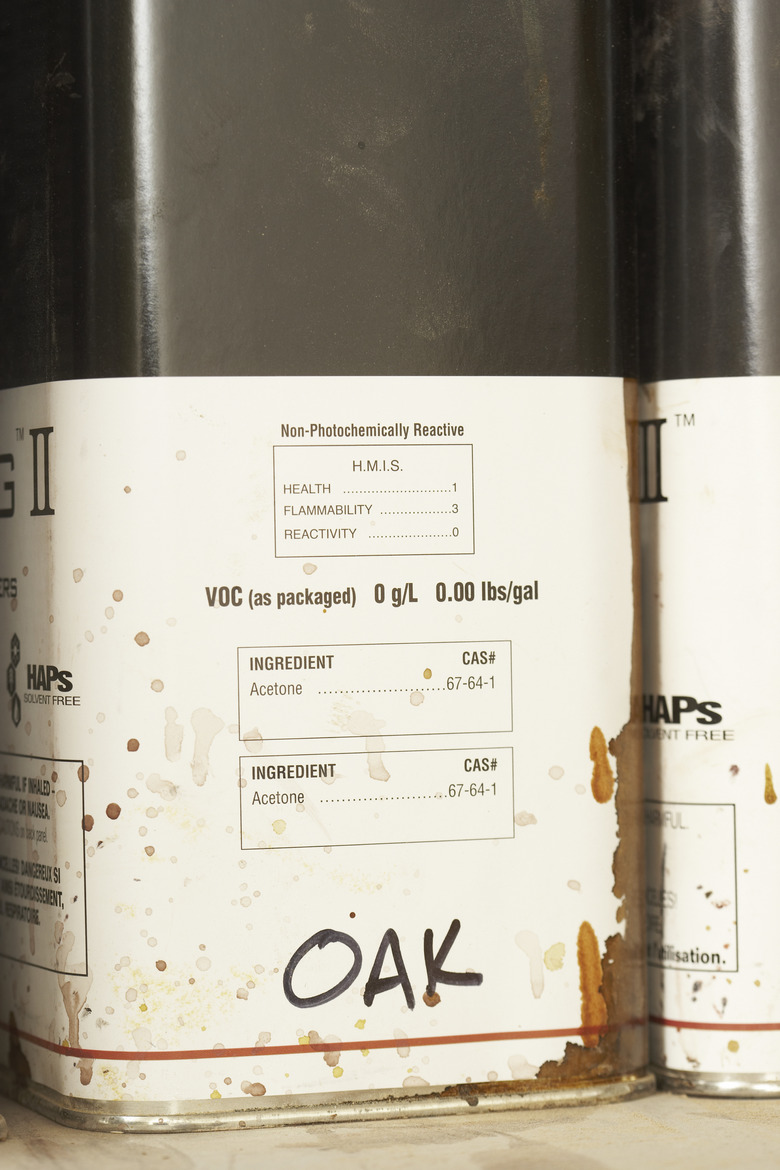How To Stain A Hollow Core Interior Door
Things Needed
-
Sawhorses
-
Screwdriver
-
Fine grit sand paper
-
Power sander (optional)
-
Tack cloths
-
Wood stain (liquid or gel)
-
Applicator brush or rags
-
Clean cloths
-
Seal finish (optional)
Tip
Make a cheap door look more expensive by upgrading the doorknob hardware. Or, make an inexpensive, plain door look like a costly panel door by adding faux panels made from molding trim.
Warning
Use rubber or latex gloves when applying the stain to avoid staining your hands.
While hollow core doors are often great budget-savers when compared to solid wood panel doors, there's no reason they can't be attractive. A nice wood stain that matches the wood work and compliments the color scheme in the room can make even a $30 door look expensive. Here's how to get a professional-looking result from a do-it-yourself staining project.
Step 1
Set up two sturdy sawhorses in a well-ventilated area and lay the door across them. If you're working indoors, lay plastic tarps under your work area to catch stain splatters and spills. Plan to have this project set up for at least two to four days. If you use improvised sawhorses, make sure the door is at a comfortable table height.
Step 2
Remove the doorknob by loosening the screws holding it in place. The doorknob will come out in two pieces. Reassemble the two pieces with the screws and set the doorknob aside.
Step 3
Sand both sides of the door using a fine grit sandpaper. Use a power sander if you like, or do it manually. Be sure you sand up and down along the grain of the wood (not side by side across the grain). Use a tack cloth to remove all the dust from the door.
Step 4
Select the type and color of stain to use. Liquid stain is fine, but gel stain is less messy and easier to control. The type of wood most often found in budget doors is a fine- or "seedy"-grained wood that has a slight red tint. This wood won't accept a light stain color like "oak" or "light maple" very well. The moment you apply the stain, the red tint of the wood will appear. A better choice of stain color is light "cherry," "dark maple," "dark oak" or "walnut." These colors will either incorporate the natural red coloring of the wood or suitably mask it.
Step 5
Apply the stain on one face of the door in long, even strokes, working with the grain of the wood. Use a stain brush for liquid stain and a soft cotton cloth for gel stain. Avoid overlapping vertical strokes–try to blend any "starting" and "stopping" points if you have to use two "passes" to stain the entire length of the door. Wipe away excess stain with a clean cloth. Remember: the longer you leave the stain on the bare wood, the darker the stain will be.
Step 6
Stain all four edges of the door. Avoid overlapping the edge stain onto the front and back of the door and getting stain on the hinge hardware.
Step 7
Let the front side of the door dry thoroughly overnight before turning the door over and staining the other side. Let that side dry overnight.
Step 8
Apply a clear sealer on the door, either in an "eggshell" or "satin" finish, for extra protection and a smoother finish. Follow the same methods as you did to stain the door. Use a clean brush for this application.
Step 9
Reattach the doorknob.
References
- "Staining and Wood Polishing Tested Techniques for Finishing Floors, Doors, and Furniture;" Charles Harold Hayward; 1979
- "Understanding Wood Finishing;" Bob Flexner; 2005
